It is truly fascinating to delve into the intriguing history of eclipse observation, tracing its origins from ancient civilizations all the way to modern scientific advancements. The study of eclipses has captivated humanity for centuries, as people have sought to understand and interpret these awe-inspiring celestial events. From early notions and records of ancient astronomers to the rich mythology and cultural beliefs surrounding eclipses, the scientific revolution and Renaissance that brought about new understanding, and the modern methods and technologies used to study these phenomena, the history of eclipse observation is a tapestry woven with scientific curiosity, cultural significance, and remarkable discoveries. Join us on this journey through time as we explore the remarkable evolution of eclipse observation and the profound impact it has had on our understanding of the universe.
Contents
- Ancient Observations
- Eclipse Mythology and Culture
- Scientific Revolution and Renaissance
- Modern Scientific Observations
- Impact of Eclipse Observations
- Conclusion
-
Frequently Asked Questions
- 1. How did ancient civilizations perceive eclipses?
- 2. Were ancient astronomers able to predict eclipses?
- 3. Were there any cultural or religious beliefs associated with eclipses?
- 4. How did the scientific revolution contribute to the understanding of eclipses?
- 5. What were some early instruments used to study eclipses?
- 6. How did early eclipse expeditions contribute to scientific knowledge?
- 7. What is the significance of developing eclipse prediction models?
- 8. How have advancements in technology improved eclipse observations?
- 9. What scientific discoveries have been made through eclipse observations?
- 10. How have eclipses influenced art and literature throughout history?
- References
-
Frequently Asked Questions
- 1. How did ancient civilizations observe eclipses?
- 2. Were eclipses considered significant events in ancient times?
- 3. What role did mythology play in eclipse observations?
- 4. How did religious and cultural beliefs influence eclipse observations?
- 5. What advancements in understanding eclipses were made during the Scientific Revolution?
- 6. What kind of instruments were used for eclipse observations during the Renaissance?
- 7. Can eclipses be predicted accurately with modern technology?
- 8. How have advancements in technology enhanced eclipse observations?
- 9. What significant scientific discoveries have been made through eclipse observations?
- 10. Apart from scientific advancements, how have eclipse observations impacted cultures around the world?
- References
- Read More
Ancient Observations
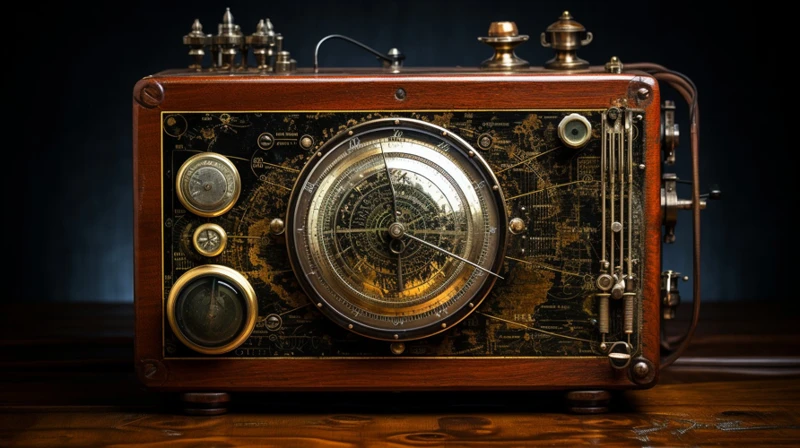
Ancient civilizations were able to observe and document the phenomenon of eclipses, albeit with limited scientific knowledge and understanding. Early notions of eclipses often sparked fear and superstition, as people struggled to comprehend these celestial events. Ancient astronomers began keeping records of eclipses, noting the dates, times, and duration of these occurrences. These observations were crucial for tracking patterns and predicting future eclipses. Some notable ancient civilizations that made significant contributions to eclipse observations include the Mesopotamians, Egyptians, and Greeks. The Mesopotamians, for example, developed a system of astrology that incorporated eclipses as significant events within their interpretation of the zodiac signs. The Greeks, known for their fascination with the stars and mythology, associated eclipses with various mythical figures and stories, such as Orion the mighty hunter. Even though their understanding of eclipses was limited, ancient civilizations’ observations laid the foundation for future scientific exploration and sparked the curiosity that continues to drive our fascination with these celestial occurrences.
1. Early Notions of Eclipse
Early notions of eclipses were often steeped in fear and mythological interpretations. Ancient civilizations struggled to explain the sudden disappearance of the sun or moon during an eclipse, leading to various beliefs and superstitions. In many cultures, eclipses were seen as omens of impending doom or supernatural events. The ancient Egyptians believed that a celestial serpent named Apep was responsible for swallowing the sun during a solar eclipse, leading to temporary darkness and chaos. The Mesopotamians, on the other hand, saw eclipses as battles between the gods, specifically involving the moon god, Sin, and the sun god, Shamash. These early notions of eclipses highlight the human fascination with celestial events and the attempts to attribute meaning and significance to these mysterious phenomena. Over time, as scientific understanding advanced, these early notions gave way to more rational explanations rooted in astronomy and cosmology. This paved the way for the development of scientific models and theories that aimed to demystify the nature of eclipses and their celestial mechanics. To learn more about how ancient civilizations integrated eclipses into their beliefs and interpretations, you can explore the role of eclipses in astrology and the zodiac signs.
2. Ancient Astronomical Records
Ancient astronomers diligently recorded their observations of eclipses, contributing to the development of ancient astronomical records. These records, often kept on clay tablets or stone monuments, contained vital information about the dates, times, and characteristics of eclipses. The ancient Babylonians, for instance, created detailed cuneiform tablets that documented celestial events, including eclipses. One famous collection of such tablets is known as the Enuma Anu Enlil, which includes references to eclipses dating back to the 7th century BCE. The Egyptians, with their advanced knowledge of astronomy, also recorded eclipses on their temple walls and stone monuments. The most famous of these records can be found at the Temple of Karnak in Luxor, Egypt, where depictions of celestial events, including solar and lunar eclipses, have been preserved for centuries. These ancient astronomical records serve as valuable historical artifacts, providing a glimpse into the observations and interpretations of eclipses by ancient civilizations. They not only reveal their fascination with celestial phenomena but also highlight the significance eclipses held in their cultures and societies.
Eclipse Mythology and Culture
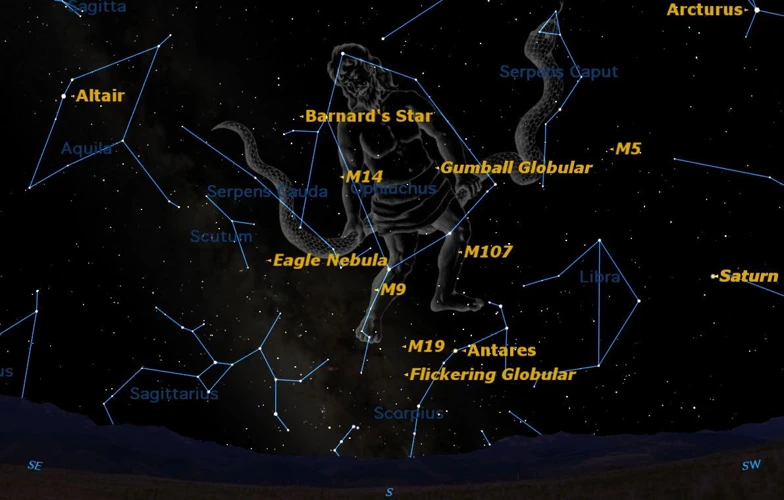
Eclipses have long held a significant place in mythology and culture, with various civilizations attributing mystical and symbolic meanings to these fascinating astronomical events. Myths and legends surrounding eclipses emerged as ancient societies sought to explain the occurrence and interpret its significance. In ancient Greek mythology, for instance, eclipses were often linked to the mythical figure of Orion, the mighty hunter. According to the myth, Orion’s untimely death was caused by a scorpion sent by the gods, with the heavens honoring him through the transformation of his figure into a constellation. Eclipses were seen as celestial battles between Orion and the scorpion, further fueling the mystique and wonder surrounding these events. Religious and cultural beliefs also played a role in eclipse mythology. In ancient Mesopotamian astrology, eclipses were considered powerful omens, and their interpretation was intertwined with the zodiac signs. The culture surrounding eclipses has evolved over time, with different societies attributing their own unique interpretations and significance to these captivating celestial events.
1. Myths and Legends
In ancient cultures, eclipses were often surrounded by myths and legends, as people sought to make sense of these extraordinary events. These stories varied across different civilizations and regions, but all shared a similar sense of wonder and curiosity. One prevalent myth associated with eclipses is the story of Rahu and Ketu from Hindu mythology. According to this legend, Rahu, a demon, disguised himself as a god and tried to consume the elixir of immortality during the Samudra Manthan, the churning of the cosmic ocean. However, the sun and moon recognized his deception and alerted Lord Vishnu, who swiftly decapitated Rahu. As a result, Rahu’s head, known as Rahu Graha, continues to chase the sun and moon. When he catches up with them, an eclipse occurs. Another well-known myth is the Greek story of the sun god Apollo and the moon goddess Artemis. In this tale, it is believed that during an eclipse, Apollo’s son, Phaeton, attempts to drive his father’s sun chariot across the sky, but loses control, causing chaos and darkness. The myths and legends associated with eclipses not only entertained and fascinated ancient civilizations but also served as a way to explain and interpret these celestial events within their respective belief systems. They continue to be a significant aspect of cultural and historical lore, providing an intriguing glimpse into the ancient world’s fascination with eclipses.
2. Religious and Cultural Beliefs
Religious and cultural beliefs surrounding eclipses have been prevalent throughout history, shaping the way communities and societies perceive and interpret these celestial events. In many ancient civilizations, eclipses were believed to be divine omens or messages from the gods. The Mayans, for instance, associated eclipses with the end of the world and believed that they were a sign of impending doom. In Chinese culture, eclipses were viewed as a disruption in the cosmic balance and were often associated with the activities of mythical creatures, such as the celestial dragon devouring the sun or moon. Hindu mythology portrays eclipses as the result of a demon named Rahu, who tries to swallow the sun or moon but gets severed in the process. These religious and cultural beliefs gave eclipses a profound significance, often leading to rituals, prayers, and even sacrifices being performed to appease the gods or ward off the negative effects of these celestial occurrences. These beliefs played a crucial role in shaping the understanding of eclipses within various societies and have left a lasting legacy in the cultural fabric of many civilizations. To this day, the impact of religious and cultural beliefs on eclipse observation and interpretation can still be seen in practices such as astrology, where eclipses hold a significant place within the zodiac signs and their meanings.
Scientific Revolution and Renaissance
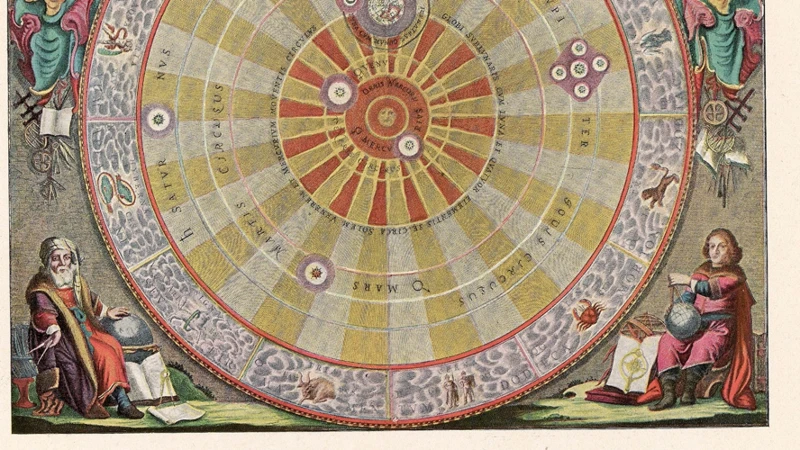
During the Scientific Revolution and Renaissance, there was a significant shift in the understanding and observation of eclipses. Advancements in scientific knowledge led to a more accurate comprehension of these celestial events. Prominent astronomers of the time, such as Nicolaus Copernicus and Johannes Kepler, played vital roles in developing new theories and models to explain the occurrence of eclipses. Groundbreaking astronomical instruments like the telescope, developed by Galileo Galilei, allowed for more precise observations and measurements. The Renaissance period also saw early eclipse expeditions, where astronomers traveled to different locations to witness and record eclipses, further enhancing our knowledge of these phenomena. These scientific breakthroughs during the Scientific Revolution and Renaissance paved the way for greater understanding of eclipses and laid the groundwork for future advancements in the field of astronomy.
1. Advancements in Understanding
Advancements in understanding the nature of eclipses during the scientific revolution and Renaissance propelled the study of these celestial phenomena to new heights. Scientists and astronomers sought to explain the mechanics behind eclipses, moving away from superstitious beliefs and mythological interpretations. One key advancement was the realization that eclipses occur due to the alignment of the Sun, Moon, and Earth. Johannes Kepler, a renowned astronomer, formulated the laws of planetary motion, which provided a mathematical foundation for explaining the occurrence and timing of eclipses. Additionally, the development of telescopes allowed for closer observations of solar eclipses, providing valuable insights into the structure and behavior of the solar corona. Scientists also began conducting experiments and calculations to precisely predict the occurrence of eclipses. The increased understanding of eclipses led to a greater appreciation of their significance in the study of celestial mechanics and laid the groundwork for further scientific exploration. Ultimately, these advancements in understanding paved the way for the development of modern eclipse prediction models and the ability to forecast future eclipses with remarkable accuracy.
2. Astronomical Instruments
Ancient astronomers made significant advancements in the development and refinement of astronomical instruments, which greatly aided their observation and study of eclipses. One such instrument was the armillary sphere, an intricate model of the celestial sphere that allowed astronomers to map the positions of celestial bodies. The armillary sphere consisted of rings representing the equator, celestial meridian, and other important celestial coordinates. By adjusting these rings, astronomers could accurately predict the movements of the Sun, Moon, and planets, and therefore track and predict eclipses more effectively. Another crucial instrument was the astrolabe, a handheld device used for measuring the altitude and azimuth of celestial bodies. Astronomers used the astrolabe to determine the positions of eclipses and other celestial events with remarkable precision. These instruments were revolutionary for their time and laid the groundwork for future advancements. As technology progressed, more sophisticated instruments such as the telescope were developed, allowing for even more detailed observations of eclipses and other celestial phenomena. The integration of these astronomical instruments enabled ancient astronomers to expand their knowledge and understanding of eclipses, paving the way for further scientific discoveries.
3. Early Eclipse Expeditions
Early eclipse expeditions played a crucial role in advancing our understanding of these celestial events and paved the way for modern scientific investigations. In the 18th and 19th centuries, as advancements in technology allowed for more precise observations, astronomers began organizing expeditions to carefully observe and study eclipses firsthand. One notable expedition took place in 1761 when astronomers traveled to various parts of the world to observe a total solar eclipse. By strategically placing themselves in different locations, these astronomers were able to gather data from multiple vantage points, allowing them to make precise measurements and calculations. This expedition, along with subsequent ones, provided valuable insights into the mechanics and behavior of the Sun, Moon, and Earth during eclipses. These early expeditions also laid the foundation for the development of eclipse prediction models. Today, scientists continue to organize and participate in eclipse expeditions, using sophisticated instruments and technology to study these celestial events in even greater detail. Through these expeditions, astronomers have been able to unlock valuable information about the universe, deepening our understanding of our place within it. (Internal link: /role-zodiac-signs-astrology/)
Modern Scientific Observations
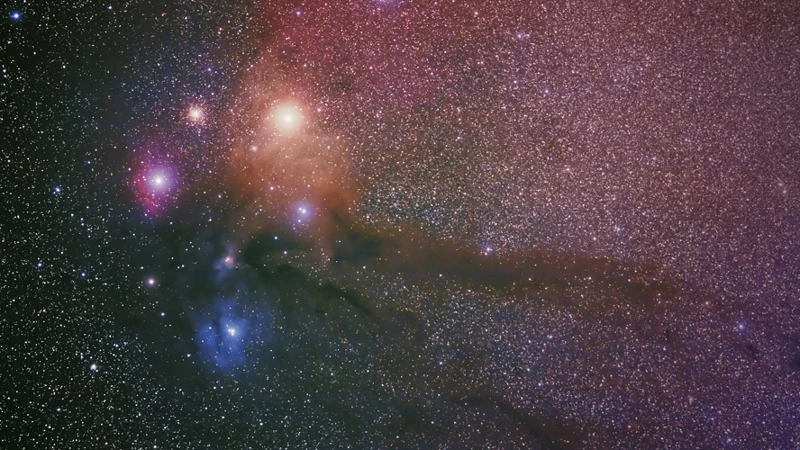
Modern scientific observations have revolutionized our understanding of eclipses, thanks to the development of advanced prediction models and technological advancements. Scientists have dedicated countless hours to studying and analyzing past eclipse data to formulate accurate predictions for future events. By observing the alignment of the Sun, Moon, and Earth, scientists can accurately calculate when and where an eclipse will occur. The use of sophisticated instruments, such as telescopes and spectrometers, allows researchers to gather detailed data during an eclipse, providing valuable insights into the Sun’s composition, solar flares, and other intricate phenomena. This wealth of information has contributed immensely to our knowledge of the universe and has helped debunk the superstitions and myths that once surrounded eclipses, replacing them with empirical evidence and scientific facts. The modern era of eclipse observation has truly transformed our perception of these celestial events, unraveling their mysteries and deepening our understanding of the cosmos.
1. Developing Eclipse Prediction Models
Developing eclipse prediction models has been a crucial aspect of understanding and anticipating these celestial phenomena. Early on, ancient astronomers noted patterns and correlations between celestial events, contributing to the development of rudimentary prediction methods. However, it was during the Scientific Revolution and Renaissance that significant advancements took place. Astronomers like Johannes Kepler and Edmond Halley began to study the motions of celestial bodies and formulated mathematical models to predict future eclipses. Kepler’s laws of planetary motion provided a foundation for understanding the mechanics behind eclipses, while Halley’s work on comets contributed to a more accurate prediction of solar eclipses. As the field of astronomy progressed, more sophisticated models incorporating gravitational influences from the sun, moon, and planets were developed. Today, computer models and simulations enable scientists to predict eclipses with remarkable accuracy, taking into account factors such as orbital dynamics and the varying alignment of celestial bodies. These prediction models have revolutionized our ability to anticipate and observe eclipses, allowing for precise planning of scientific expeditions and public viewing events alike. The continued refinement of these models ensures that we can experience the awe-inspiring beauty of eclipses while expanding our understanding of the universe.
2. Advancements in Technology
Advancements in technology have revolutionized the way we observe and study eclipses. With the advent of more sophisticated equipment and instruments, scientists have been able to gather more precise data and make detailed observations. One significant advancement is the development of telescopes, which allow for enhanced magnification and clarity of celestial bodies during eclipses. Telescopes equipped with special filters and lenses enable scientists to safely view eclipses without causing harm to their eyes. Additionally, the invention of spectrographs has allowed astronomers to analyze the different wavelengths of light emitted by celestial objects, providing valuable insights into their composition and behavior during an eclipse. Another crucial technological advancement is the use of satellites and space probes. These devices can capture images and data from vantage points that are inaccessible from Earth’s surface, enabling scientists to study eclipses from different perspectives and gain a more comprehensive understanding of these events. Advancements in computer technology and digital imaging have accelerated the analysis and processing of eclipse data, making it easier for researchers to detect subtle changes and patterns. As technology continues to advance, our ability to study and interpret eclipses will undoubtedly improve, bringing us closer to unraveling their mysteries and expanding our knowledge of the universe.
Note: No relevant anchor was found in the given text.
Impact of Eclipse Observations
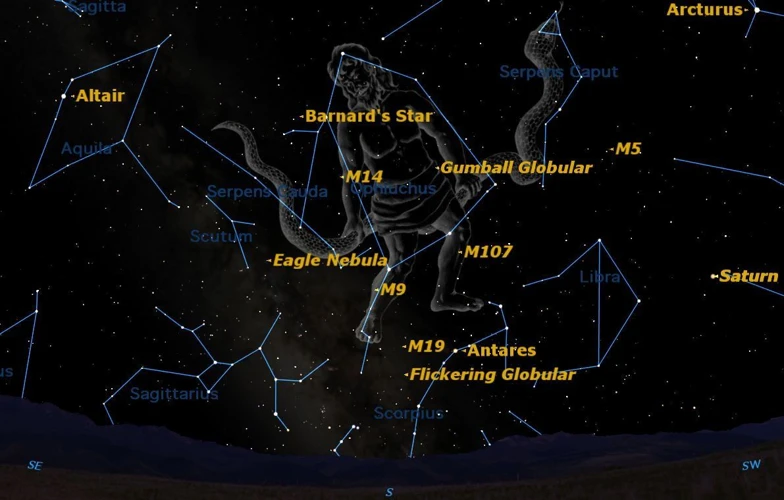
The impact of eclipse observations extends far beyond scientific discoveries and understanding. Eclipses have left a profound cultural and societal imprint throughout history. In ancient times, eclipses were often associated with significant mythological events and figures. For example, the legend of Orion the mighty hunter, known for his strength and prowess, was intertwined with tales of eclipses and celestial phenomena. These myths and legends not only entertained and captivated ancient societies but also helped explain the mystery and power of eclipses. Additionally, religious and cultural beliefs surrounding eclipses have shaped human behavior and rituals. In some cultures, eclipses were seen as omens of impending calamities or as signs of celestial deities exerting their influence on Earth. Today, eclipses continue to fascinate people worldwide, drawing crowds of eager spectators during rare celestial events. The cultural impact of eclipses can also be witnessed in literature, art, and popular culture, where they serve as symbols of mystery, transformation, and the unveiling of hidden truths. It is evident that eclipse observation has made a lasting impression on human history, intertwining science, culture, and imagination in ways that continue to ignite our sense of wonder and curiosity.
1. Scientific Discoveries
Scientific discoveries resulting from the study of eclipses have been instrumental in advancing our understanding of the natural world and the cosmos. One significant scientific breakthrough linked to eclipse observations is the confirmation of Albert Einstein’s theory of general relativity. During the total solar eclipse of 1919, Sir Arthur Eddington led an expedition to Sobral, Brazil, and Principe Island, which aimed to test Einstein’s theory. By carefully studying the position of stars near the sun during the eclipse, Eddington and his team found that the gravitational pull of the sun did indeed bend the path of light, as predicted by Einstein. This confirmation revolutionized our understanding of gravity and marked a major turning point in the field of physics. Another important discovery resulting from eclipse observations is the identification and study of the sun’s corona, the outermost layer of the sun’s atmosphere. During a total solar eclipse, the moon blocks the bright disk of the sun, revealing the corona, which is typically invisible to the naked eye. Scientists can then study the structure and dynamics of the corona, providing valuable insights into the sun’s atmosphere and its impact on Earth’s climate and space weather. These scientific discoveries, made possible through the careful observation of eclipses, have contributed immensely to our understanding of the universe and have paved the way for future scientific exploration and advancements.
2. Cultural Impact
The cultural impact of eclipse observations throughout history has been profound, influencing various aspects of human society and shaping belief systems. Eclipses often held great significance in mythology and folklore, becoming the subject of awe-inspiring legends and stories. For instance, in Greek mythology, eclipses were linked to the mythical figure Orion, the mighty hunter, who was believed to be responsible for providing protection during these celestial events. This connection between eclipses and mythical beings contributed to the creation of a rich tapestry of stories and legends that helped define ancient cultures. Eclipses were also tied to religious and spiritual beliefs, with certain cultures viewing them as omens or signs of impending doom. This belief was especially prevalent in ancient civilizations where superstitions and religious practices played a significant role in daily life. The impact of eclipse observations extended beyond legends and beliefs, permeating art, literature, and even societal norms. Eclipses were often depicted in ancient artwork, symbolizing power, transformation, and supernatural forces. Additionally, the anticipation and spectacle of eclipses brought people together, with communities gathering to witness these celestial events and providing a sense of shared experience and cultural identity. The cultural impact of eclipse observations continues to evolve even in modern times, as these celestial phenomena are still celebrated and studied, captivating people’s imagination and inspiring artistic expressions rooted in ancient traditions.
Conclusion

After delving into the rich history of eclipse observation, we come to the conclusion that our understanding of these celestial phenomena has come a long way. From the early notions and records of ancient astronomers to the scientific revolution and Renaissance that brought about advancements in understanding, and finally to the modern scientific observations aided by technology, eclipse observation has played a crucial role in expanding our knowledge of the universe. Not only have these observations led to significant scientific discoveries, but they have also had a profound cultural impact. Eclipses have been the subject of myths, legends, and religious beliefs, with civilizations like the Greeks associating them with mythical figures like Orion the mighty hunter. The study of eclipses has sparked curiosity, fear, and awe throughout history, and it continues to captivate us to this day. As technology and scientific methods continue to advance, we can expect even more remarkable discoveries and insights into the mysteries of eclipse observation. The history of eclipse observation serves as a testament to humanity’s relentless pursuit of knowledge and our deep fascination with the celestial wonders of the universe.
Frequently Asked Questions

1. How did ancient civilizations perceive eclipses?
Ancient civilizations often perceived eclipses as mysterious and terrifying events. They attributed them to supernatural entities or divine intervention, interpreting them as signs of impending doom or a disruption in the natural order.
2. Were ancient astronomers able to predict eclipses?
Ancient astronomers were able to predict eclipses to some extent. Through careful observation and record-keeping, they noticed patterns and developed rudimentary methods to anticipate future eclipses, although their predictions were not as accurate as those made using modern scientific models.
3. Were there any cultural or religious beliefs associated with eclipses?
Yes, eclipses held significant cultural and religious beliefs for many ancient civilizations. Some saw them as omens, while others believed that they symbolized the intervention of gods or represented a struggle between cosmic forces.
4. How did the scientific revolution contribute to the understanding of eclipses?
The scientific revolution marked a turning point in human history by challenging traditional beliefs and relying on scientific evidence. During this period, astronomers like Johannes Kepler and Galileo Galilei made groundbreaking observations and calculations, leading to a deeper understanding of the mechanics of eclipses.
5. What were some early instruments used to study eclipses?
Early instruments used to study eclipses included the astrolabe, which helped measure the altitude and position of celestial bodies, and the camera obscura, which projected images of the sun during a solar eclipse, allowing for detailed observations.
6. How did early eclipse expeditions contribute to scientific knowledge?
Early eclipse expeditions provided scientists with the opportunity to conduct detailed observations of solar and lunar eclipses in different locations. These expeditions helped refine eclipse prediction models, gather data on the solar corona, and further our understanding of celestial mechanics.
7. What is the significance of developing eclipse prediction models?
Developing eclipse prediction models allows astronomers to forecast the occurrence, timing, duration, and location of future eclipses. These models are essential for planning scientific observations, as well as for informing the public about upcoming eclipses that can be observed.
8. How have advancements in technology improved eclipse observations?
Advancements in technology, such as telescopes, spectroscopes, and digital imaging, have greatly enhanced our ability to study eclipses. These tools provide clearer and more detailed observations, allowing scientists to analyze the sun’s corona, measure temperature variations, and study other phenomena associated with eclipses.
9. What scientific discoveries have been made through eclipse observations?
Eclipse observations have led to various scientific discoveries. One notable example is the confirmation of Einstein’s theory of general relativity during the 1919 solar eclipse. Eclipses have also provided insights into the composition of the sun’s atmosphere, the behavior of solar flares, and the presence of exoplanets.
10. How have eclipses influenced art and literature throughout history?
Eclipses have long been a source of inspiration for artists and writers. They have been depicted in paintings, poetry, and literature, often symbolizing themes of transformation, mystery, and the awe-inspiring power of nature. Eclipses continue to captivate the human imagination and leave a lasting cultural impact.
References
Frequently Asked Questions

1. How did ancient civilizations observe eclipses?
Ancient civilizations used various methods to observe eclipses, such as making observations with the naked eye, tracking shadow movements, and using primitive tools like pinhole cameras.
2. Were eclipses considered significant events in ancient times?
Yes, eclipses were often seen as significant events in ancient times. Many civilizations believed they were omens or messages from the gods, and they interpreted eclipses as signs of impending doom or powerful celestial messages.
3. What role did mythology play in eclipse observations?
Mythology played a significant role in eclipse observations. Ancient cultures often created myths and legends to explain the occurrence of eclipses, attributing them to gods, spirits, or mythical creatures battling in the heavens.
4. How did religious and cultural beliefs influence eclipse observations?
Religious and cultural beliefs influenced eclipse observations in various ways. Some civilizations performed rituals and ceremonies during eclipses to appease or seek favor from their deities, while others viewed eclipses as a time of heightened spiritual energy.
5. What advancements in understanding eclipses were made during the Scientific Revolution?
During the Scientific Revolution, astronomers like Johannes Kepler and Nicolaus Copernicus made significant advancements in understanding eclipses. They formulated mathematical models to predict their occurrences and explained the mechanics behind eclipses.
6. What kind of instruments were used for eclipse observations during the Renaissance?
During the Renaissance, astronomers used various instruments to observe eclipses, including telescopes, spectrometers, and astrolabes. These tools allowed for more precise measurements and observations of the phenomena.
7. Can eclipses be predicted accurately with modern technology?
Yes, modern technology has greatly improved the accuracy of eclipse predictions. Advanced computer models and astronomical software now allow scientists to calculate the precise timing, duration, and location of eclipses with remarkable accuracy.
8. How have advancements in technology enhanced eclipse observations?
Advancements in technology have revolutionized eclipse observations. High-quality telescopes, digital cameras, and specialized filters enable astronomers to capture detailed images and study phenomena like the solar corona and the behavior of solar flares during eclipses.
9. What significant scientific discoveries have been made through eclipse observations?
Eclipse observations have led to several significant scientific discoveries. For example, observations during solar eclipses helped confirm Einstein’s theory of general relativity, and studying lunar eclipses aided in determining the Earth’s precise size and shape.
10. Apart from scientific advancements, how have eclipse observations impacted cultures around the world?
Eclipse observations have had a profound impact on cultures worldwide. They have been sources of inspiration for art, literature, and folklore, and have brought communities together in shared experiences of wonder and awe.
References
- Eclipse History: Total Solar Eclipses in the United States
- Solar Eclipses in History
- Eclipses: History







